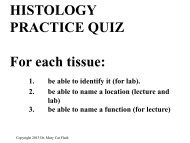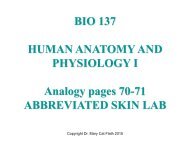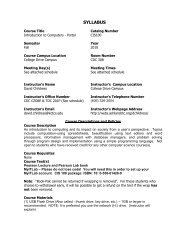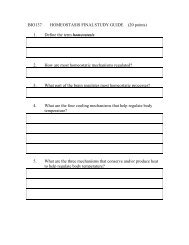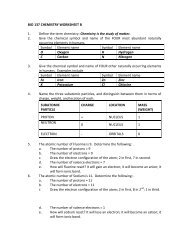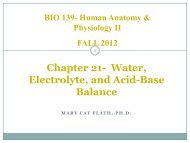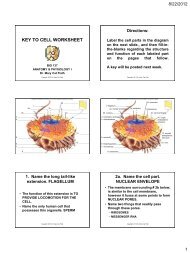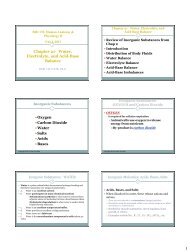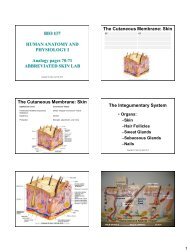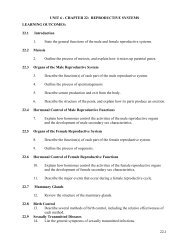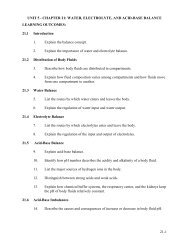CHAPTER 1: INTRODUCTION TO HUMAN ANATOMY ...
CHAPTER 1: INTRODUCTION TO HUMAN ANATOMY ...
CHAPTER 1: INTRODUCTION TO HUMAN ANATOMY ...
You also want an ePaper? Increase the reach of your titles
YUMPU automatically turns print PDFs into web optimized ePapers that Google loves.
UNIT 1- <strong>CHAPTER</strong> 1: <strong>INTRODUCTION</strong> <strong>TO</strong> <strong>HUMAN</strong> ANA<strong>TO</strong>MY AND PHYSIOLOGY1.5. MAINTANENCE OF LIFEA. Requirements of Organisms See Fig 1.5 and Table 1.4, page 17.1. nutrients for energy2. oxygen for cellular respiration3. water for most metabolic reactions, lubrication, etc.4. heat to maintain 37 o C body temperature, enzyme action5. pressure for breathing and filtering blood through kidneysB. Homeostasis See Fig 1.6, page 18.1. Definition = the tendency of an organism to maintain a relatively stableinternal environment despite external changes.o This is done by keeping conditions in a homeostatic range compatiblewith life, near a “set point” value.2. Most life processes and metabolic reactions work to maintain homeostasis.3. Most homeostatic mechanisms are regulated by negative feedback (seeexample below), which bring conditions back toward set point.4. Sometimes conditions are purposely moved away from the set point. Thisis called positive feedback.a. Examples include “fight-or-flight” and blood clotting discussed inchapters 13 and 14, respectively.5. All homeostatic mechanisms have three components in common.a. Receptor – senses change in environmentb. Control Center – regulates set point of variablesc. Effector – organ that acts in response to changes1-5



